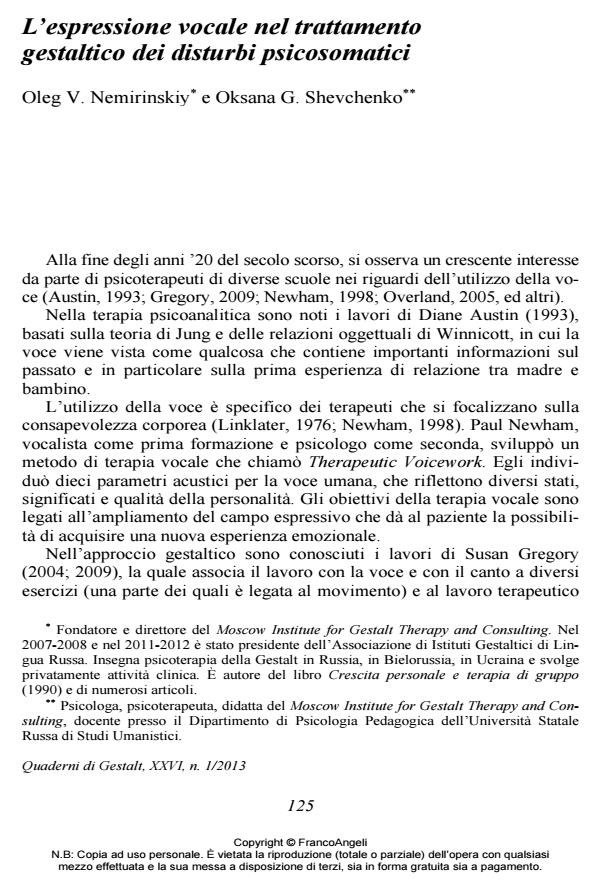The Use of Voice for treatment of Psychosomatic Disturbances
Journal title QUADERNI DI GESTALT
Author/s Oleg V. Nemirinskiy, Oksana G. Shevchenko
Publishing Year 2013 Issue 2013/1
Language Italian Pages 12 P. 125-136 File size 433 KB
DOI 10.3280/GEST2013-001010
DOI is like a bar code for intellectual property: to have more infomation
click here
Below, you can see the article first page
If you want to buy this article in PDF format, you can do it, following the instructions to buy download credits

FrancoAngeli is member of Publishers International Linking Association, Inc (PILA), a not-for-profit association which run the CrossRef service enabling links to and from online scholarly content.
The article is an application of gestalt approach to psychosomatic therapy which considers a symptom as a frozen contradiction and as a unity of retroflection and projection and offers methodical integration of work with body processes and relationships. The authors elaborated a voice method in psychosomatic therapy. Stages of voice therapy, particular techniques and clinical illustrations are presented. Finally, there are two short case descriptions which illustrate the principles of symptom as well as stages and techniques of therapy.
Keywords: Symptom, contradiction, contact boundary, reverse of retroflection, relational context, chronic body tension.
Oleg V. Nemirinskiy, Oksana G. Shevchenko, L’espressione vocale nel trattamento gestaltico dei disturbi psicosomatici in "QUADERNI DI GESTALT" 1/2013, pp 125-136, DOI: 10.3280/GEST2013-001010